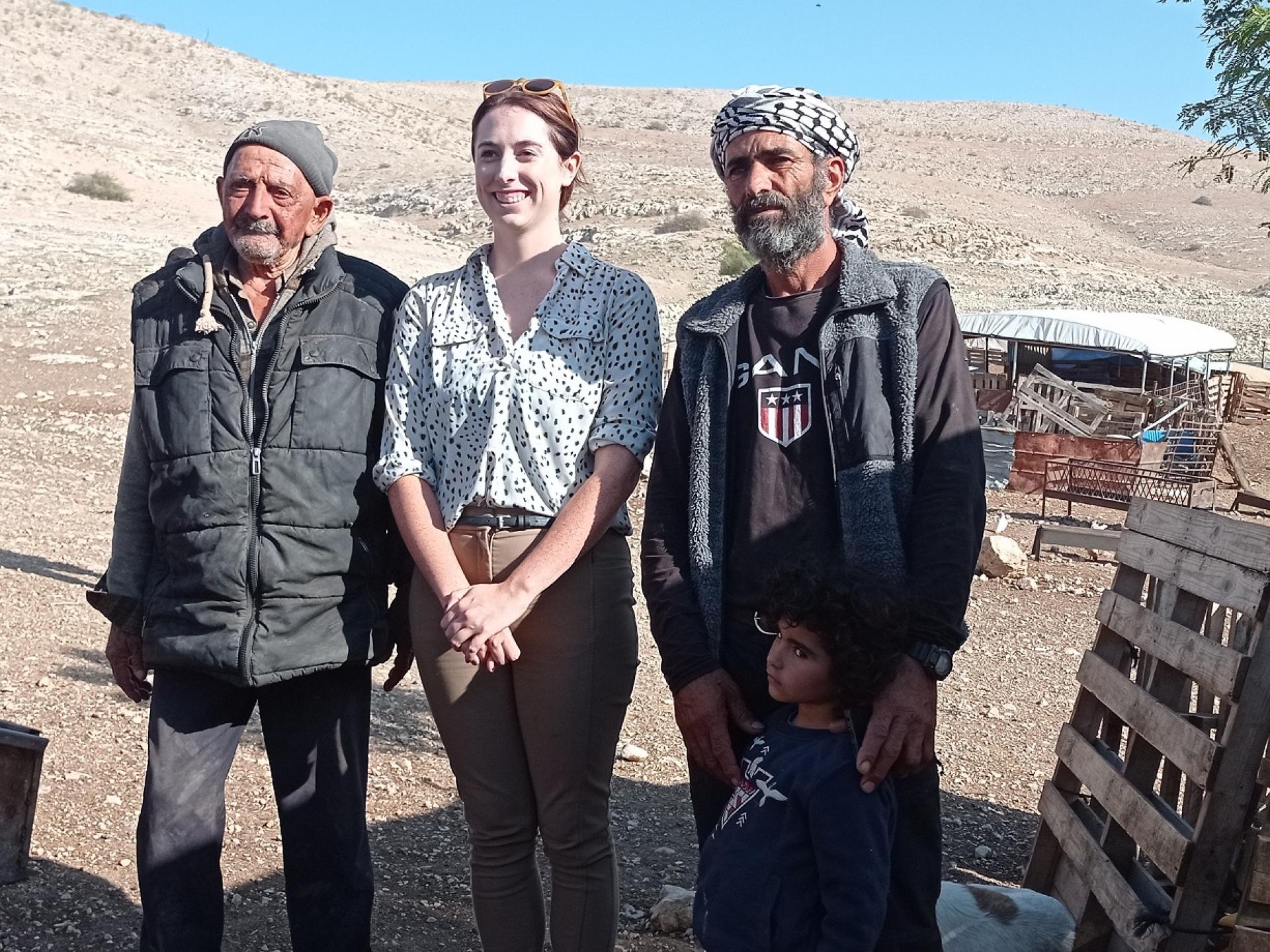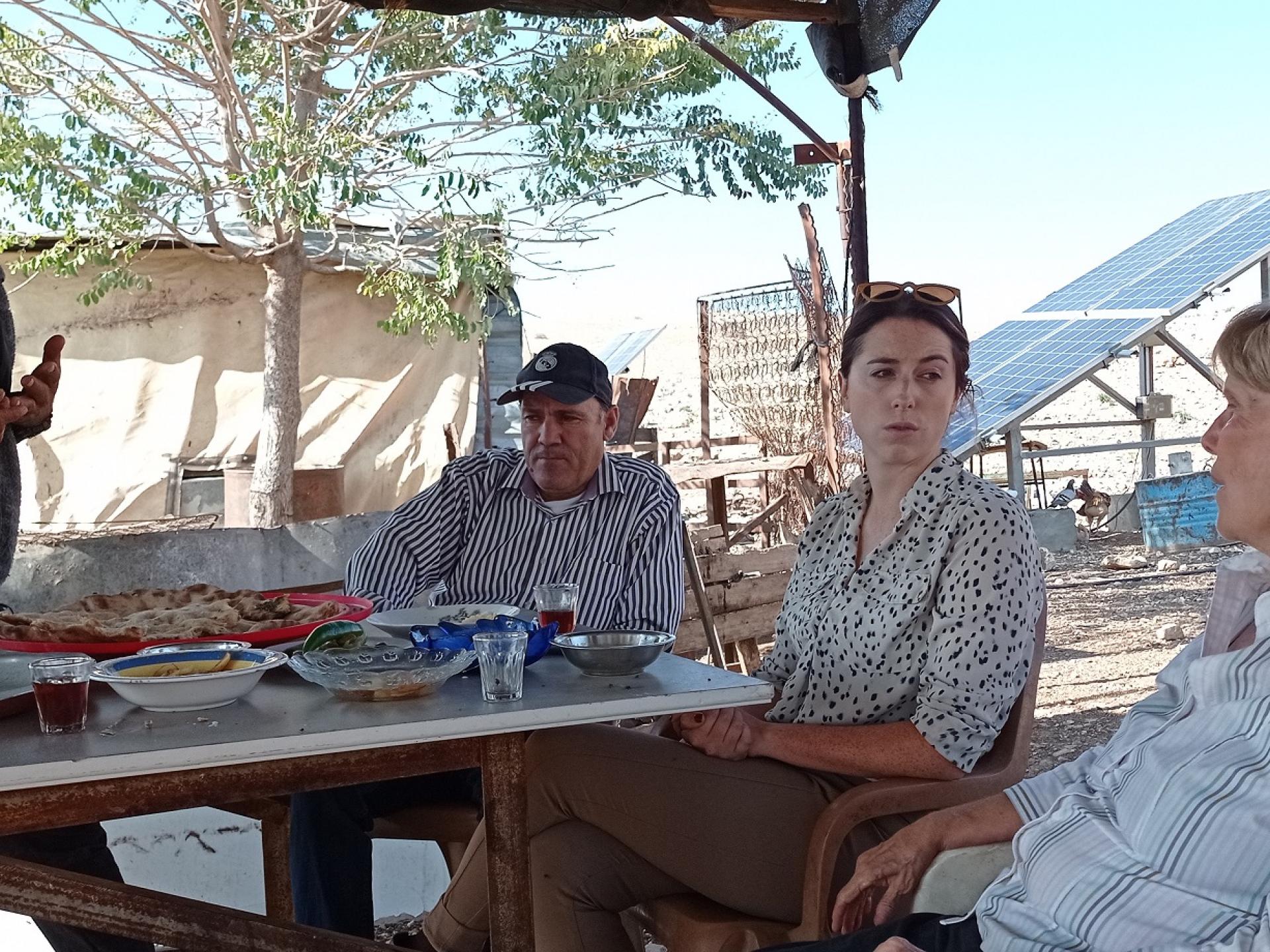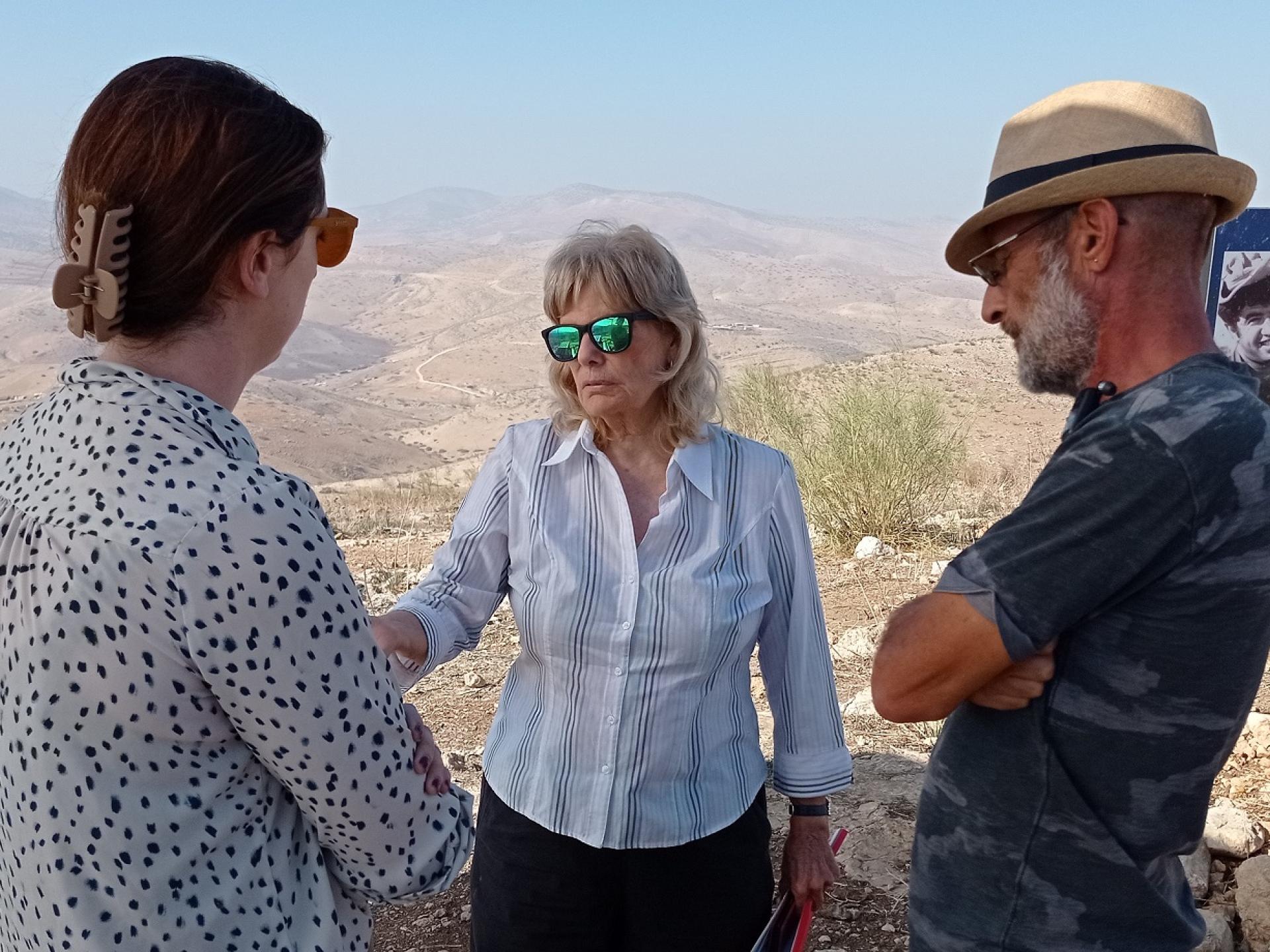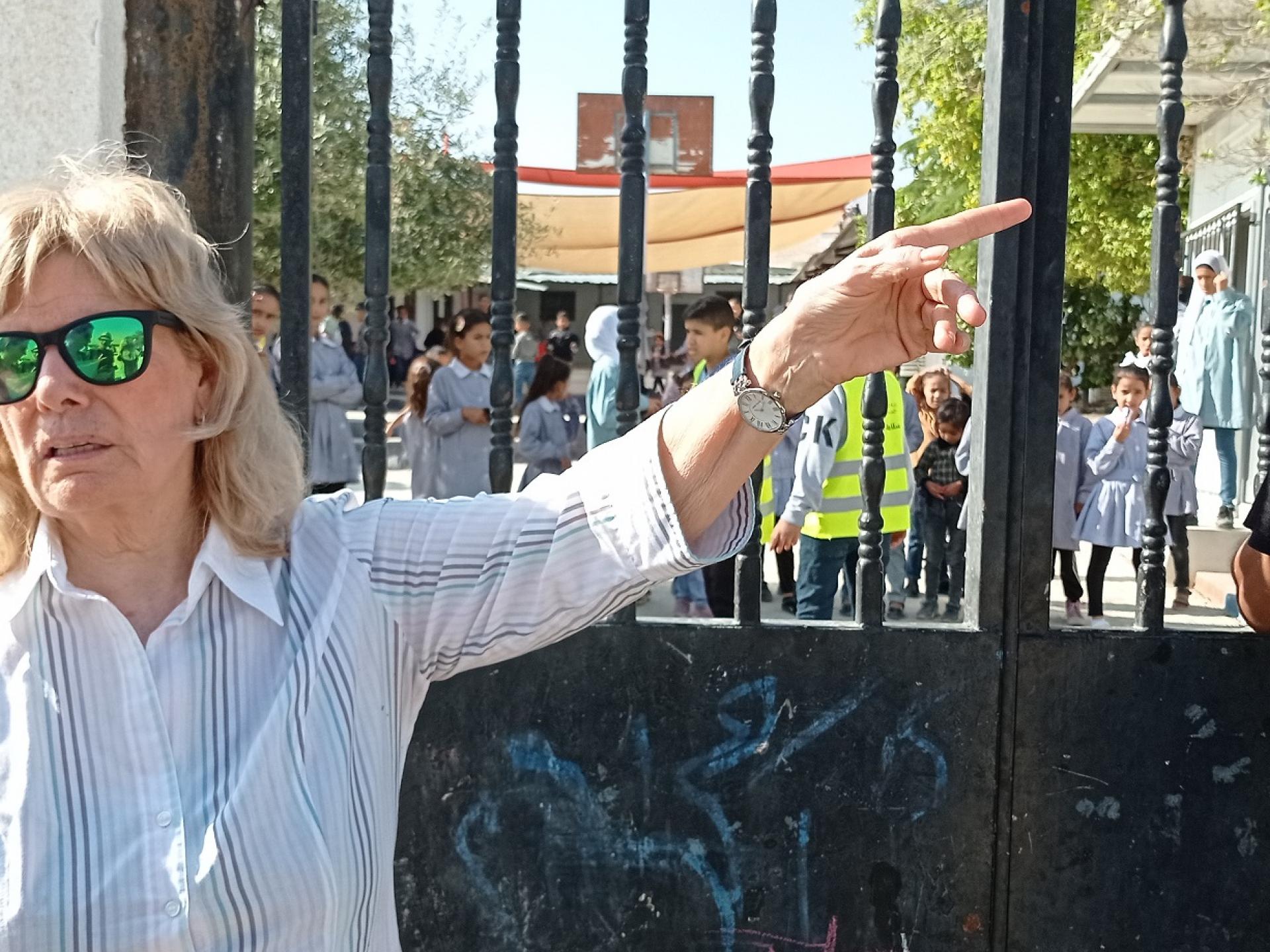Tour for the representative of the American Embassy in the Jordan Valley
Palestinian Jordan Valley Tour – Auja, Fasail and Umm Zuka areas
Participants: Ms. Tiffany Cox, representative of Palestinian Affairs at US Embassy
Accompanied by security guards in 4 armored white Toyotas
Daphne Banai (initiated, planned and guided the tour)
Guy Hircefeld (guided)
Shauli (of Looking the Occupation in the Eye), Hagar Gefen (translated talks with Palestinians), Nurit Popper (photography)
The areas which we visited:
- Grazing grounds of shepherds from Murja’at close to the Mevoo’ot Yericho colony and Omer’s outpost. We met with Umm Rashid, who told the representative about difficulties in grazing as the colonists push them back from their traditional grazing grounds into arid areas, harass them in various ways including targeting the flocks, threats to the extent that they fear to come out to graze. Indeed, many days when there are no Israeli accompaniers the shepherds and their flocks stay home.
- Auja spring close to the water pump- There was water streaming in the spring and ditches. Daphne explained the ruined Jordanian ditch-system, the over-pumping and the water problems in the Auja area and the Palestinian Jordan Valley as a whole.
- Fasail Foqa, close to the local schoolhouse – we met Yakub, the village chief, who spoke about problems that came up in the past two years, ever since Elhanan’s outpost was founded on the basis of the Mal’achei Ha-Shalom outpost at En Rashash, situated right below Duma village above the Fasail springs. The problems grow worse daily, and the rich grazing grounds over the entire hill area and close to the springs are blocked against the Palestinian shepherds’ flocks.
Lately, the boys working for Elhanan have been coming to the village itself and harming villagers, including children.
- The Fasail springs – near the water ditch and the rusted water pipe: on our way to the springs we pointed out the closed water pipe that used to serve as a water source for the flocks and filling water tankers. The villagers receive water only once in 4 days, not enough for both the families and the flocks, and therefore they used to rely on water tankers that would connect to the pipe at the entrance to the springs. Two weeks ago, colonists blocked the pipe and now the village sorely lacks water.
When we arrived, we were very impressed by the green slopes on the northern side of the hill. When we approached the ditch, we were surprised to see a flock of sheep lazily grazing and drinking of the ditch water unhampered, a totally different sight from what we saw on our visit last week. Apparently, the shepherds took out the boulders and stones placed there by the colonist and his boys that blocked the ditch, and somewhat repaired the pipe that still leaks. It seems that the shepherds - desperate to provide their flocks with water and prevent dehydration – overcame their fear of Elhanan, and come to the spring itself, risking their flock being confiscated by the Israel Authority of Nature and National Parks inspector, who has become the colonists’ executive arm in recent years. They come to the source of the water itself. One of them showed us a video in which Elhanan is seen declaring that this water belongs to him (the video is attached – see the cold-blooded arrogance of the boy on the ATV when the Palestinian cries bitterly “Why did you shut off our water?” and the boy says, “Bring papers…”
With maps, Daphne explained the terrain and the colonist takeover.
- A meeting at the Gino Lookout in Umm Zuka – from there we observed Asa’el’s outpost in the west and Uri’s in the other side, while on the horizon we saw the contiguous line of colonies and colonist outposts: Ori, Asa’el, Maskiyot, Rotem, Giv’at Sal’it and Shirat Ha-Asabim in the distant north.
A short explanation followed of the colonist outpost takeover of the entire area and the dispossession of the Palestinian villagers there, with maps prepared by Daphne.
- Visiting Burhan – he talked about problems he has been facing lately while grazing, when Uri of Umm Zuka and Menachem of the outpost near Hemdat chase him away and threaten him, and break into his home at night in order to scare and chase him away entirely.
A light lunch followed.
- En Al Hilwa – looking at the pool fenced in by the colonists in order to block the flocks’ passage along the wadi. About 4-5 colonists bathed naked and as soon as they saw us, they wrapped themselves in their prayer shawls.
In conclusion – the tour was informative and important, yielding a report sent to Washington. The multiple guides voiced too much information, in my opinion, and I am not sure the Embassy Representative digested it all. Too bad she didn’t write things down, as her predecessors had done. Daphne prepared informative pages about the Valley and the water problems, to be used later. Meeting the Palestinians in various sites added a lot to the tour and affected the officials’ understanding of the problems.




